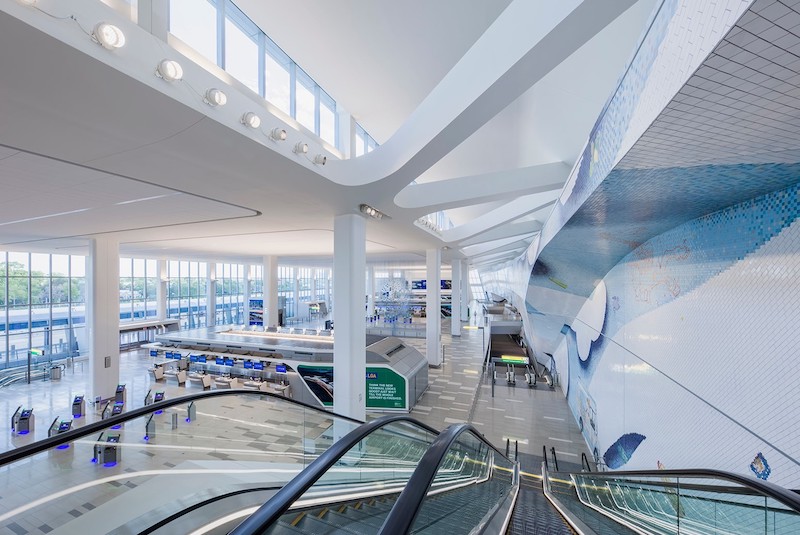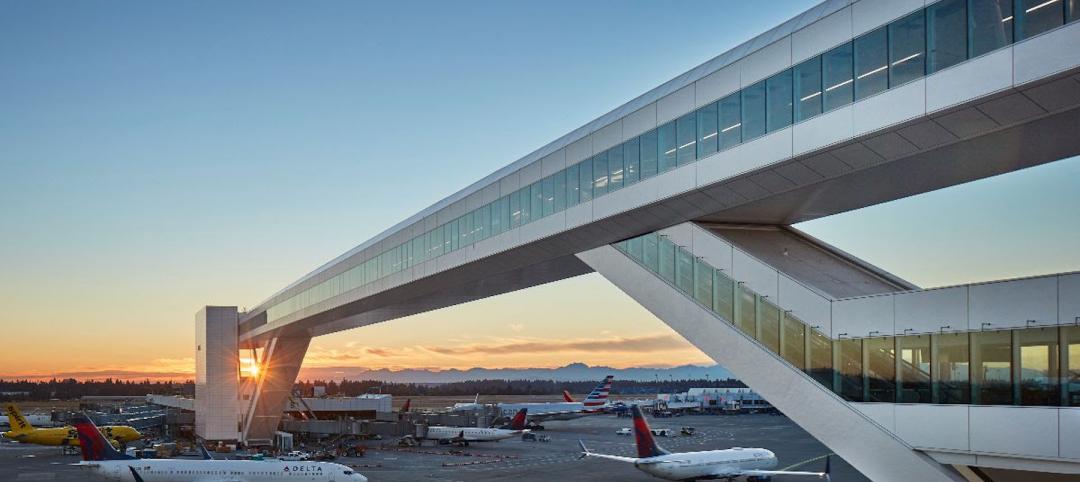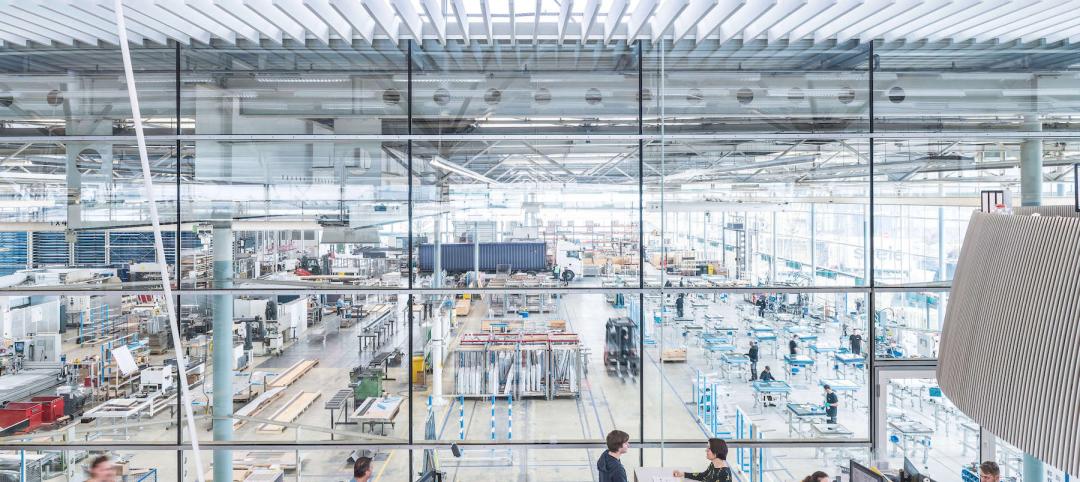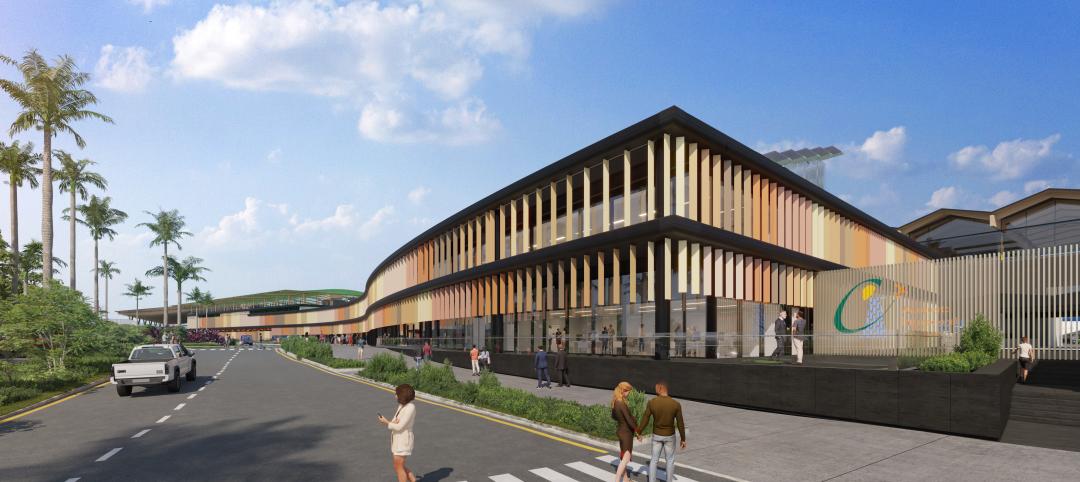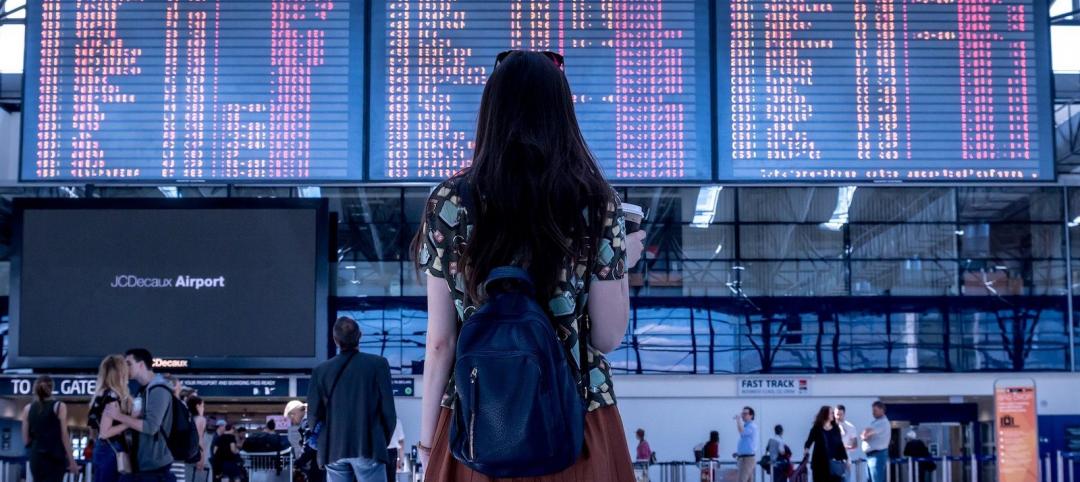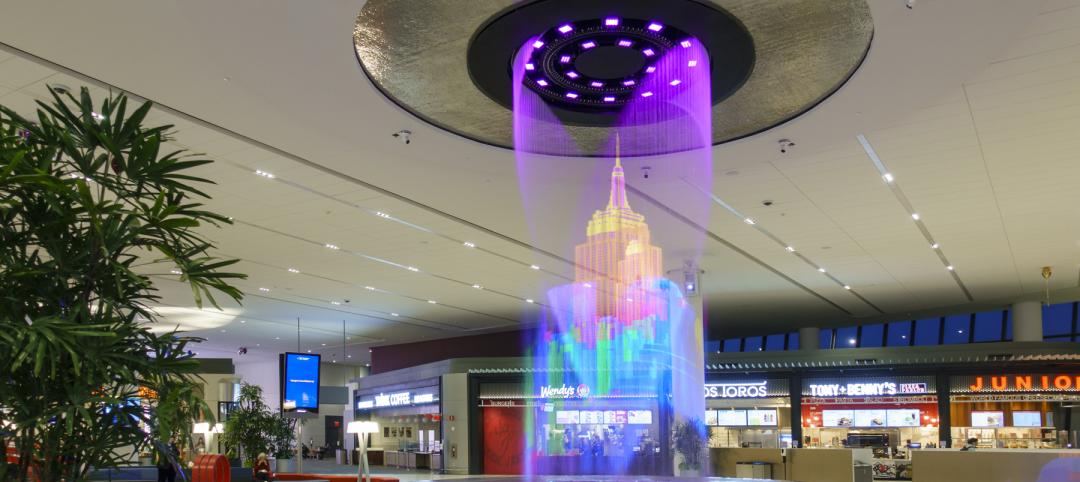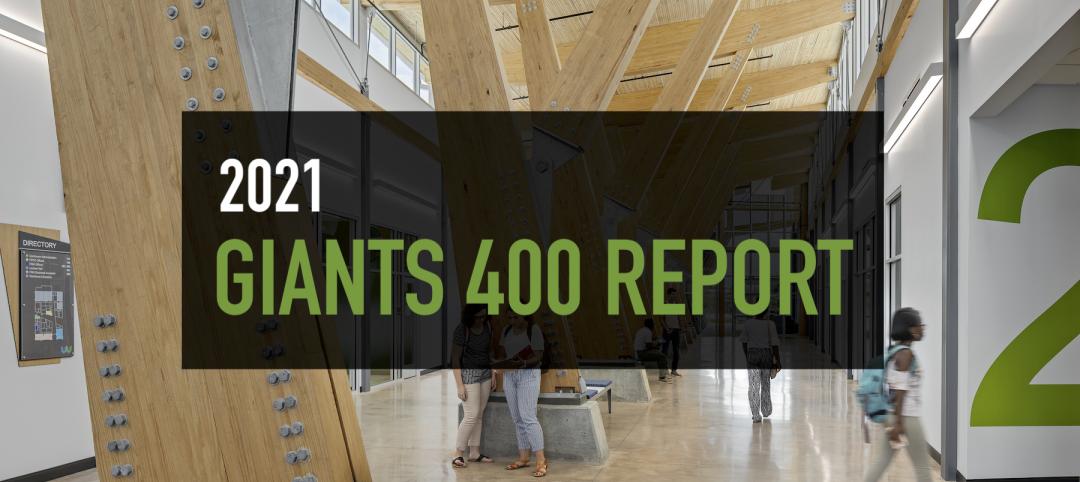LaGuardia Airport’s new Terminal B, a four-story, 850,000-sf facility that houses passenger services and amenities, has officially opened.
The steel-framed facility replaces a disjointed patchwork of structures with one that closely follows the curves of the Grand Central Parkway and the airport access roads. It was designed as a highly efficient and adaptable terminal that pays homage to the “architectural grandeur and individuality” of New York City.
“Our design concept focuses on two main components: a superior passenger experience and an exterior architectural expression that conveys a civic presence from the Grand Central Parkway,” said Carl Galioto, FAIA, HOK’s President and New York Office Managing Principal. “The building is a metaphor for New York, a city of islands and bridges, and the terminal is connected to the city with views of the skyline from the passenger bridges. Our ambition was to help transform LaGuardia into an airport with a distinct civic identity worthy of this metropolis.”

Also known as a headhouse, Terminal B includes extensive food and beverage and retail options. Connected to two island concourses by a pair of 450-foot-long steel truss pedestrian bridges, the headhouse serves as the nexus to the new Terminal B. Arriving and departing passengers can view panoramic skyline and airfield views from the transparent-walled, 65-foot-high bridges as taxiing planes pass underneath them. The bridges also enabled the design team to move the terminal 600 feet closer to the Grand Central Parkway, which allowed for two additional miles of aircraft taxi lanes that will reduce airport ground delays.
The team designed a simplified circulation network comprising over eight miles of new roadway and 20 new bridges that provide an easy connection from the airport to the Grand Central Parkway and New York City. The roadways in front of the head house frame the Grand Central Parkway, and its column structures align with the head house design to create a cohesive appearance.
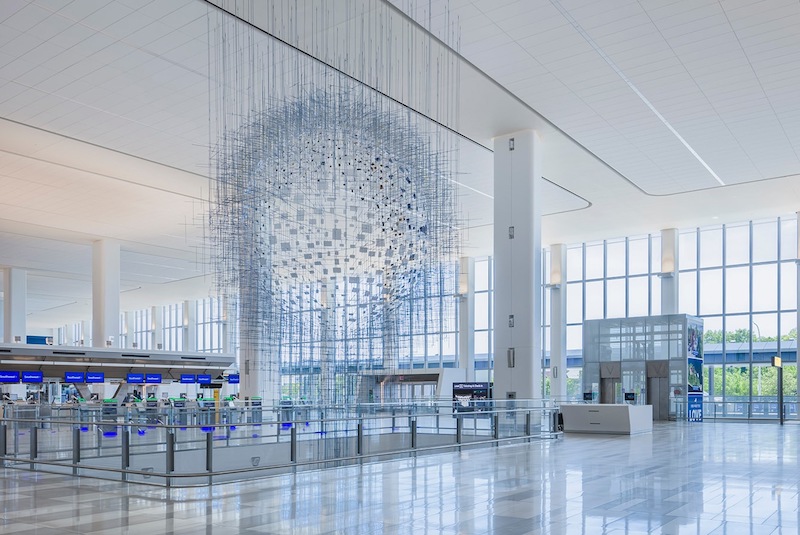
Inside the terminal, all check-in and passenger screening areas are located on the third floor. This location gives Terminal B the adaptability to accommodate evolving security screening and technology as needs change. The “common-use” design allows airlines to move easily within the terminal, expanding or shrinking their footprints as needed.
See Also: A 780-ft-long pedestrian walkway is positioned over an active taxi lane at Sea-Tac International
Terminal B forgoes the widespread practice among airports of offering monumental spaces to departures while relegating low-ceilinged, basement-like zones to arrivals; incoming and outgoing passengers to Terminal B share soaring, grand-scaled sequences.

Sustainability features include non-glare daylighting, passive shading, natural local materials, and storm resiliency and the new infrastructure layout will reduce the airport’s overall carbon footprint due to lower fuel demands from taxiing aircraft. The project is targeting LEED Silver certification.
LaGuardia Gateway Partners is composed of Vantage Airport Group, Skanska, Meridiam and JLC Infrastructure for development and equity investment. Vantage Airport Group leads the redevelopment program and management of Terminal B, with Skanska Walsh as the design-build joint venture and HOK and WSP for design.
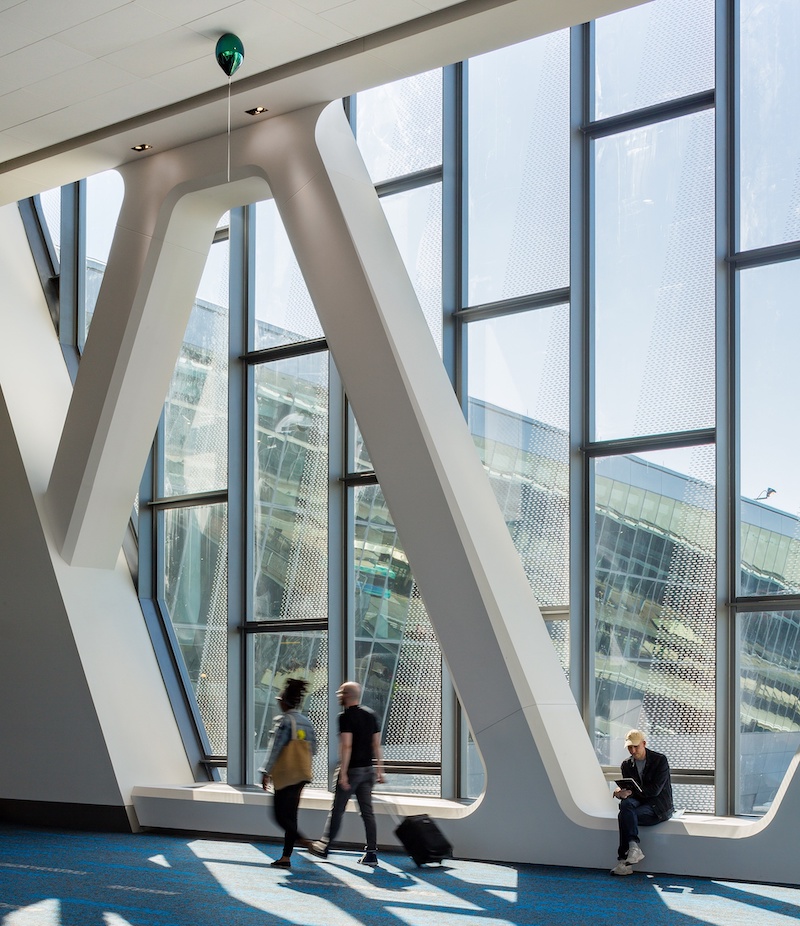
Related Stories
Airports | Jun 2, 2022
SOM-designed International Arrival Facility at Seattle’s Sea–Tac airport features the world’s largest aerial walkway
The Skidmore, Owings & Merrill (SOM)-designed International Arrivals Facility (IAF) at Seattle-Tacoma International Airport has opened, replacing a 50-year-old arrival facility.
Sponsored | BD+C University Course | May 3, 2022
For glass openings, how big is too big?
Advances in glazing materials and glass building systems offer a seemingly unlimited horizon for not only glass performance, but also for the size and extent of these light, transparent forms. Both for enclosures and for indoor environments, novel products and assemblies allow for more glass and less opaque structure—often in places that previously limited their use.
Airports | Apr 4, 2022
Dominican Republic airport expansion will add mixed-use features
The recently revealed design concept for the expansion of Santiago International Airport in the Dominican Republic includes a transformation of the current building into a mixed-use space that features an office park, business center, and hotel.
Codes and Standards | Mar 4, 2022
FAA offers $1 billion in grants for airport terminal and tower projects
The Federal Aviation Administration (FAA) is now accepting applications for about $1 billion in grants for airport projects during fiscal year 2022.
Resiliency | Feb 15, 2022
Design strategies for resilient buildings
LEO A DALY's National Director of Engineering Kim Cowman takes a building-level look at resilient design.
Sponsored | Resiliency | Jan 24, 2022
Blast Hazard Mitigation: Building Openings for Greater Safety and Security
Coronavirus | Jan 20, 2022
Advances and challenges in improving indoor air quality in commercial buildings
Michael Dreidger, CEO of IAQ tech startup Airsset speaks with BD+C's John Caulfield about how building owners and property managers can improve their buildings' air quality.
Giants 400 | Oct 22, 2021
2021 Airport Sector Giants: Top architecture, engineering, and construction firms in the U.S. airport facilities sector
AECOM, Hensel Phelps, PGAL, and Gensler top BD+C's rankings of the nation's largest airport sector architecture, engineering, and construction firms, as reported in the 2021 Giants 400 Report.
| Oct 14, 2021
The future of mass timber construction, with Swinerton's Timberlab
In this exclusive for HorizonTV, BD+C's John Caulfield sat down with three Timberlab leaders to discuss the launch of the firm and what factors will lead to greater mass timber demand.
Giants 400 | Aug 30, 2021
2021 Giants 400 Report: Ranking the largest architecture, engineering, and construction firms in the U.S.
The 2021 Giants 400 Report includes more than 130 rankings across 25 building sectors and specialty categories.


